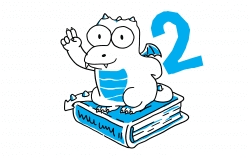I know all the secrets of this place. I remember it when it was fields, as far as the eye can see, and thick with wading birds and red kites wheeling overhead. I remember when there were just a handful of houses, and now look at it. And I remember too when there was no lake here at all.
That’s when this story begins.
The year was 1607. Over four hundred years ago now.
I want you to imagine what it would have been like. Stand here. In this exact spot. Look around you. Only instead of the lake and the houses and the path, you can see fields. Fields and trees and field boundaries as far as the eye can see. And criss-crossing the fields are the reens, and the drainage channels, cut through the earth to keep the fields drained and dry. And there you can see it. A little cottage with a thatched roof, and a yard outside with a chicken house on wooden legs, and an apple orchard. And beyond the cottage, a little village, only a small collection of houses and cottages, a church, a village square and a tavern.
This was where Mam and me lived, with our chickens, in the little cottage with the chicken house on the edge of the village. This place, it was my whole world.
So, as you can imagine, four hundred years ago, some things were very different. But some things were exactly the same. It was January. We’d just had Christmas. You know, in those days, there was always snow at Christmas. And me and Mam didn’t have much money but we made the most of it. We saved the best and biggest of Betsi’s eggs to have for breakfast, and we drank homemade cider on Christmas Day with spices in it. And then January came and everything was cold and windy and Mam would look at the sky and say, “Storm’s a-coming.”
I knew when the storms came that we had to be careful. Because that’s when the sea would rise – in the time of the walking people, they’d be long gone by now. But since they’d built all the reens and the channels that drained the land we lived on, and constructed the sea wall, we could stay here all year round, but we still had work to do when the storms came. We had to make sure our reen at the bottom of the fied was clear of reeds and mud, so that the water level could rise safely without turning our orchard into a quagmire. So I would check on it most days, making sure it wasn’t blocked, and the chickens always came with me, clucking along behind me and Betsi right at my heels, leading the charge through the apple trees.
While I took the chickens to the reen every day, Mam would collect their eggs in her wickerwork basket. Sometimes they were a bit possessive over their eggs, so she said it was good to collect while they were distracted.
After she collected the eggs, it was usually time for lunch.
In fact, Mam was calling me home for lunch when it happened.
I heard her shout my name. “Chicken!” she said. And just as she said that, my belly gave a great big rumble, because it had been hours since my porridge at breakfast time. But just as it did, I heard her shout my name again and this time it wasn’t a lunch-is-ready shout. It was a scared shout.
I looked through the bare branches of the apple trees. And I saw it.


